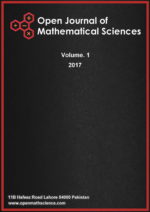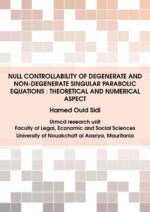A clinicopathologic investigation study of lichen planus
Abstract:Aim: A clinicopathologic investigation study of lichen planus.
Methods: This prospective and observational study was carried out in the Department of Oral Pathology & Microbiology, S.B.Patil Dental College \& Hospital, Bidar, Karnataka for a period of 1 year. 90 cases of Lichen Planus (LP) were included in this study. A complete clinical history was obtained, including duration, place of start, symptoms, medication history, and family history. A thorough general checkup, systemic examination, and dermatological examination were performed. The form and location of skin lesions, as well as the existence of any other related disorders, were all documented. Mucosa, hair, nails, palms, soles, and extremities involvement were all noted as concomitantly affected. To assess the histological diagnosis, haematoxylin and eosin stained sections of lesional tissue biopsies were generated. Once the histopathology slide was complete, each slide was attentively examined, and the findings were thoroughly analyzed and appraised.
Results: Out of 90 patients 55(61.11%) were male and 35(38.89%) were female and male to female ration were 1:1.57. Most of the patients belong to 30-40 years of age group (38.89%), followed by 20-30 years (26.67%), below 20 years (22.22%) and 12.22% above 40 years. 45 individuals had LP for less than 5 months before presenting to our out-patient service. The length varied from 5 to 11 months in 22 cases. The duration was longer than 24 months in 15 individuals. The length varied from 11 to 17 months in 5 individuals and from 17 to 24 months in the remaining 3. The classical type was encountered in 51 (56.67 percent) of the 90 Lichen Planus(LP) patients, followed by the hypertrophic type in 23 (25.56 percent) patients, linear LP and lichen planopilaris (LPP) in 4 (4.44 percent) patients each, oral and annular 2(2.22 percent) patients each, and follicular, bullous LP and LP pigmentosus in 1 (1.11 percent) patients each. Of the 90 patients in our research, 40 showed oral signs of LP, and four of them were diagnosed with just oral LP devoid of cutaneous indications of LP. Buccal mucosa was usually implicated in the oral cavity in 30 (75%) patients, lips in 10 (25%) individuals, and tongue in 7 (17.5%) patients. In our study, only two clinical kinds of oral LP were identified: the reticulate type in 35 (87.5 percent) of the subjects and the erosive variation in the other 5 people (12.5 percent ).
Conclusion: The current study sheds light on the clinicopathological behaviour of lichen planus patients according on their gender. Further research in this area will aid in the exploration of this uncharted territory, allowing for faster diagnosis and better treatment. LP was usually noticed in people in their forties and fifties. In our analysis, classical lesions were the most prevalent, followed by hypertrophic and linear types.









